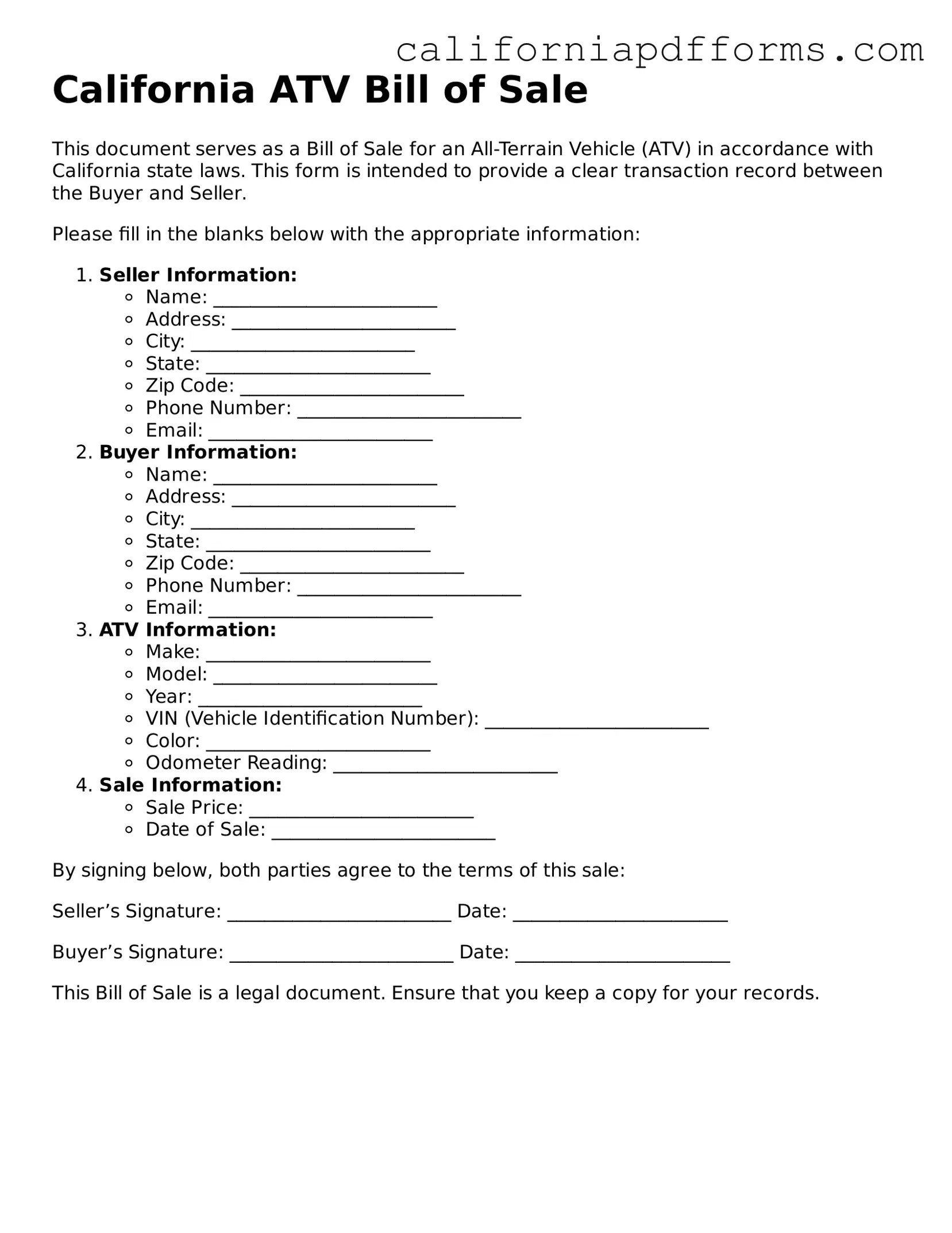Official ATV Bill of Sale Template for the State of California
The California ATV Bill of Sale form is a crucial document that facilitates the transfer of ownership for all-terrain vehicles (ATVs) in the state. This form not only serves as a receipt for the transaction but also provides essential information for both the buyer and seller. If you're ready to make a purchase or sell your ATV, ensure you fill out the form by clicking the button below.
Open Your Form Online
